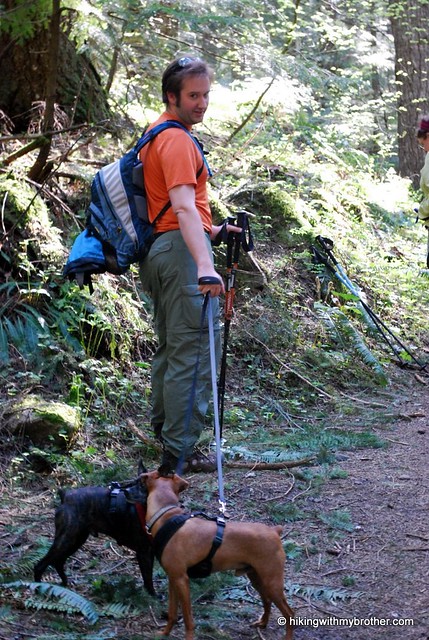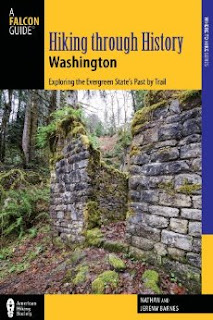Total Ascent: 3700ft
Highest Point: 5629ft
Total Distance: 8.6 miles
Location: N 47° 25.0260, W 121° 28.8720
Required Permit: Northwest Forest Pass
Difficulty: Hard
 A gorgeous cloudless day begs for a climb up the side of a mountain that can deliver views measured in miles and landscapes vast enough to stretch beyond description. Luckily, we knew exactly the hike to live up to the expectations of the day. And so, since the snow had melted out sufficiently to allow easier access to the summit, we paid a visit to our old friend Granite Mountain.
A gorgeous cloudless day begs for a climb up the side of a mountain that can deliver views measured in miles and landscapes vast enough to stretch beyond description. Luckily, we knew exactly the hike to live up to the expectations of the day. And so, since the snow had melted out sufficiently to allow easier access to the summit, we paid a visit to our old friend Granite Mountain.
At 5,629’, Granite Mountain is one of the most easily accessible and therefore one of the more popular summits in the Snoqualmie Pass region. The summit is graced with an operational fire lookout staffed by the Forest Service during the summer months. First established in 1920, the lookout began as a flimsy cabin that was rebuilt and elevated in 1924. When the snow melts, the cement foundations of the 1924 cabin can still be seen near the current lookout tower, which was built in 1955.
The hike begins on the Pratt Lake Trail #1007, rolling through lush forests of cedar and Douglas fir, frequently passing over creeks and streamlets. After about a mile the route meets the Granite Mountain Trail #1016 and the tenor of the trail shifts from an uphill amble to a thigh-burning workout.
 Navigate the rocky trail as it switchbacks through the increasingly dry terrain and catch the occasional glimpse of your eventual goal high overhead. As you gain elevation, trees thin and become more diminutive while ferns yield ground to bear grass and mountain blueberry. Eventually the trees are entirely left behind, the views are laid bare, breezes keep the bugs at bay during the summer months, and the trail grade relents slightly as the fire lookout comes into view. While snow is on the ground, a ridge route straight to the summit avoids most avalanche danger. As the snow recedes, the rocky ridge is less appealing than the formal trail route that snakes beneath the ridge before zigzagging up the bluff the lookout resides upon.
Navigate the rocky trail as it switchbacks through the increasingly dry terrain and catch the occasional glimpse of your eventual goal high overhead. As you gain elevation, trees thin and become more diminutive while ferns yield ground to bear grass and mountain blueberry. Eventually the trees are entirely left behind, the views are laid bare, breezes keep the bugs at bay during the summer months, and the trail grade relents slightly as the fire lookout comes into view. While snow is on the ground, a ridge route straight to the summit avoids most avalanche danger. As the snow recedes, the rocky ridge is less appealing than the formal trail route that snakes beneath the ridge before zigzagging up the bluff the lookout resides upon.The views that begin hundreds of feet below culminate as you attain the lookout, snowy mountaintops spreading out with a mesmerizing immensity. Mt. Rainier dominates the skyline, in every way demanding attention and dwarfing Mt. Catherine and Humpback Mountain just across I-90 far below. If you can tear your eyes off Rainier, the beginnings of
 Keechelus Lake can be seen to the east, and Bandera Mountain quietly neighbors to the west. Looking north, the eye is drawn to the distinctive Kaleetan Peak, as well as Chair Peak and Mt. Stuart, while just below Crystal Lake and Upper Tuscohatchie Lake gleam invitingly in the sunlight.
Keechelus Lake can be seen to the east, and Bandera Mountain quietly neighbors to the west. Looking north, the eye is drawn to the distinctive Kaleetan Peak, as well as Chair Peak and Mt. Stuart, while just below Crystal Lake and Upper Tuscohatchie Lake gleam invitingly in the sunlight.This hike can be challenging. In summer months the sun beats down on exposed rocks and meadows, making the trail dusty without much relief in the form of extra water. Avalanches have taken the lives of hikers on Granite, so take extra caution during the spring. The trail is almost exclusively an uphill battle, so prepare for a long day. If necessary, take that extra break to fuel up for the final push – the views from the top are more than rewarding and well worth your perseverance. Of course, when there’s snow, getting down the mountain is quick and a lot of fun.












